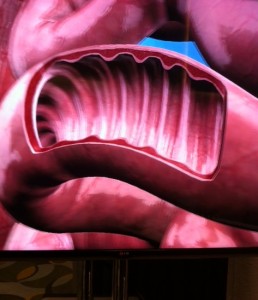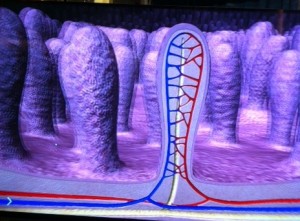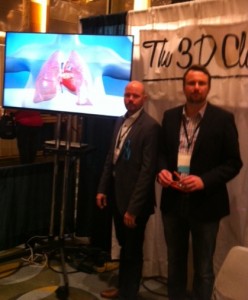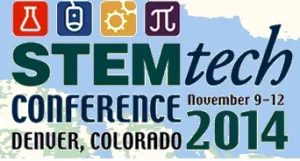3D in Education – 3D continues to be a topic of interest at national and regional STEM conferences. (STEM is an acronym for [applied] science, technology, engineering and math.) On that note, I recently attended the recent STEMtech 2014 conference in Denver (CO) and my hopes for latching onto some suitable educational 3D content and happenings were not disappointed.
STEMtech is an international conference put on by the League for Innovation in the Community College. Several 3D talks were featured in the concurrent sessions and several 3D vendors were present in the small exhibit hall, including both 3D printing and 3D visualization companies. Here are some highlights:
3D @ Wallace State
Dr. Suhana Chikatla, an instructional learning designer with the Advanced Visualization Center in the Department of e-Learning at Wallace State Community College (AL), offered a session on its ongoing development of interactive 3D models. Wallace State is developing rendered-3D content in collaboration with other institutions in Alabama. Like many colleges, it is using students or in-house designers to develop its models. You can explore its work here: http://elearning.wallacestate.edu/3d-interactive-learning-activities/

One of the striking Sensavis simulations shown at STEMtech 2014
3D @ Sensavis
Sensavis, the Swedish 3D visualization company also provided a solid foothold at STEMtech 2014, offering both a concurrent session and an attractive booth presence in the exhibit hall. The company featured a display-based, passive-glasses solution that drew solid crowds of educators to the booth. Many folks I observed left with considerable delight, no doubt due to the quality, striking realism, and “fantastic voyage” drill-down nature of the stereo and rendered 3D simulations. When done right, 3D exhibits can really draw in the customers – and this exhibit was appealing visually and in terms of the right human connections: the business development head and a past school principal of a 3D-using school were both pressing the flesh.

Another striking simulation shown at the Sensavis booth

Mattias Bostrom, a past 3D-using middle school principal and Andreas Kirsebom, head of Sensavis Business Development. A simple booth–but oh so striking content.
3D @ San Antonio College
Aaron Ellis, the Senior Multimedia Specialist at San Antonio College, provided an in-depth session on “3D visualization for STEM disciplines”. In this session, he explained the efforts at San Antonio College to use 3D technology from the entertainment industry (film, television, games) to capture and deliver educational STEM content to students. “For some concepts and skills, lecture isn’t always enough. And textbooks can’t always explain and illustrate everything students need to understand”, explained Ellis, a former classroom and online instructor.
Ellis works closely with his STEM faculty to identify concepts that students consistently misconceive in their science classes. His group then evaluates that content for potential alternative methods of delivery to students. “Sometimes a well-built animation or video clip can meet the need”, he explains. “But other times interactive 3D is the only thing that can help students finally ‘get it’”. Ellis also believes that the virtualization of artifacts and concepts is sometimes “the only way for online students to experience anything close to hands-on learning”. Most of what Ellis tackles is at the direct request of the faculty, designed to enhance a specific instructional topic. However, sometimes opportunities arise that Ellis senses are too important to miss out on. For example, when dinosaur tracks were uncovered in limestone layers at a nearby state park, Ellis took its 3D scanning equipment out on the site in 100+ temperatures and collected data from over 50 footprints.
San Antonio College uses a variety of technologies to capture or create the rendered and stereo 3D content that it delivers to its STEM students. “The primary capture process we use is called photogrammetry”, explains Ellis. “Photogrammetry allows us to make digital 3D replicas of real objects by stitching together multiple photographs of that object from a variety of angles using specialized software”. He adds: “Recently, we began using a scanning electron microscope to image micro- and nano-scale objects and turn them into 3D models”. For more information, and an overview of the many projects, take time to survey Ellis’ blog at http://stemviz.wordpress.com.
*****
Often, nascent 3D (or 4K for that matter) hardware and software manufacturers simply push their wares at the wrong conferences. Dedicated STEM conferences – or conferences with strong STEM tracks – make for more fertile ground for 3D or 4K sales in education. It makes sense. – Len Scrogan

